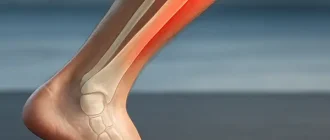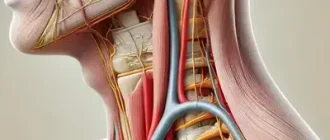Discomfort in the back part of the knee can be highly inconvenient and restrict the ability to complete simple actions like walking and bending the knee. This discomfort can heavily impact daily tasks and overall state of being.
The triggers that commonly cause this pain will be addressed, and we will offer helpful suggestions on how to alleviate the discomfort.
Causes of Pain in the Back of the Knee
- Hamstring Strain: The hamstrings are located at the posterior side of the thigh and play a role in knee flexion. Stretching or tearing these muscles can lead to discomfort at the back of the knee. These sorts of injuries can happen during activities that require sudden bursts of speed or excessive stretching, like running or engaging in high-impact sports.
- Baker’s Cyst: A Baker’s cyst, also called a popliteal cyst, is a sac full of fluid that forms at the rear of the knee. This condition frequently occurs due to underlying factors like arthritis or inflammation in the knee joint. The cyst leads to discomfort and swelling, which heighten when the knee is moved or when activities involving bending are performed.
- Meniscus Tear: The menisci, which are cushioning pads in the knee joint, can cause discomfort at the posterior of the knee if one of these cartilages, typically the medial meniscus, tears. This problem often arises when sudden twisting movements are made during sports or other physical activities.
- Bursitis: Bursae are small fluid-filled sacs that act as cushions between tendons, muscles, and bones. Inflammation of the bursa behind the knee, known as bursitis, can lead to discomfort and swelling in the back of the knee. This condition can be caused by repetitive movements or prolonged kneeling.
Relief and Recovery Strategies
- Rest and Ice: If you feel pain at the back of your knee, make sure to rest it properly. Refrain from engaging in activities that worsen the pain and use ice packs wrapped in a cloth for 15-20 minutes every 2-3 hours. Ice is beneficial for reducing inflammation and offering temporary relief from the pain.
- Gentle Stretching and Strengthening Exercises: In order to reduce tension and increase flexibility, it is advantageous to participate in gentle stretching exercises that focus on the hamstrings and quadriceps muscles. However, if someone wants to do exercises that strengthen the legs, such as leg curls or squats, it is crucial to consult a healthcare professional to avoid causing any further injury.
- Physical Therapy: Seek guidance from a physical therapist who can offer personalized exercises and treatments to target the root cause of your knee discomfort. Physical therapy can help strengthen the muscles around the affected area, enhance flexibility, and alleviate pain.
- Medications and Injections: Ibuprofen, which is readily available without a prescription, can be used to control pain and inflammation. In some instances, a healthcare professional may recommend steroid injections as a treatment option to relieve pain and decrease swelling.
- Supportive Bracing: Utilizing knee braces or supportive sleeves can offer stability and alleviate the strain on the posterior side of the knee. These aids prove especially beneficial when being physically active or participating in sports.
Conclusion
Knowing the reasons behind and implementing effective methods to alleviate pain in the back of your knee can greatly affect your everyday existence. It’s important to seek the guidance of a healthcare expert for an accurate diagnosis and customized treatment plan. By taking proper care and managing your condition, you can overcome this discomfort and restore your ability to move and enjoy your life.
About the Author
Reyus Mammadli is the author of this health blog since 2008. With a background in medical and biotechnical devices, he has over 15 years of experience working with medical literature and expert guidelines from WHO, CDC, Mayo Clinic, and others. His goal is to present clear, accurate health information for everyday readers — not as a substitute for medical advice.







